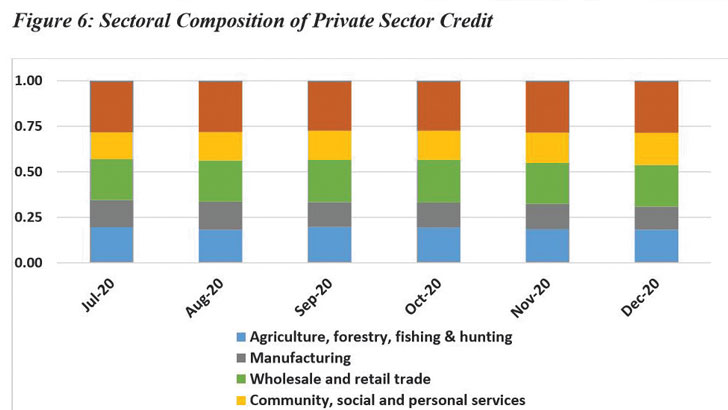Local Banks In Cautious Lending
Private sector credit declined by seven percentage points to 16.8 percent in the first quarter—January to March 2021—published “The quarterly average growth rates stood at 17.3 percent in 2021Q1 and 24.0 percent in 2020Q1.”
During the review period, community, social and personal services sector; wholesale and retail trade; and agriculture, forestry, f ishing and hunting sectors had a combined holding of 66.6 percent of the industry credit.
RBM figures show that community, social and personal services sector surpassed the wholesale and retail trade as the largest holder of outstanding private sector credit, with its share of 27.2 percent (K201.5 billion) of gross loans.

The wholesale and retail trade, on the other hand, was second at 22.2 percent (K164.5 billion), while agriculture, forestry, fishing and hunting at 17.2 percent (K127.4 billion).
The cautious lending comes on the back of worsening bad loans in 2020 despite measures instituted by RBM to mitigate the impact of the Covid-19 pandemic on the economy.
During the year, non-performing loans (NPLs) increased by 11.1 percent to K44.7 billion from the pre-pandemic level of K40.3 billion in 2019.
On the other hand, private sector credit decreased to a two year low of 5.2 percent in June 2020, as the first wave of the Covid-19 pandemic took its toll, but recovered in the second half of 2020 following the easing of the Covid -19 restrictions.
However, to avoid a possible financial system distress on the banking industry which was already being impacted by the Covid-19 pandemic through, among others, growth in bad loans, RBM maintained the policy rate at 12 percent.
In an interview, economist Frederick Changaya observed that there are so many other moderat ing var iab les to economic stimulation than policy rate.
He said Malawi needs a package of policy instruments to put the economy on a sure path for sustainable economic development.
He said: “For example, what sectors are we actively promoting? Are factors of production rewarded accordingly? Are there mutual benefits from our value systems or are benefits skewed to undeserving players?
“I always advise that both monetary authorities and fiscal authorities work in tandem to ensure they create policy instruments that are consistent and complementary one to the other. Otherwise they can easily cancel each other in which case the economy pays heavily.”





